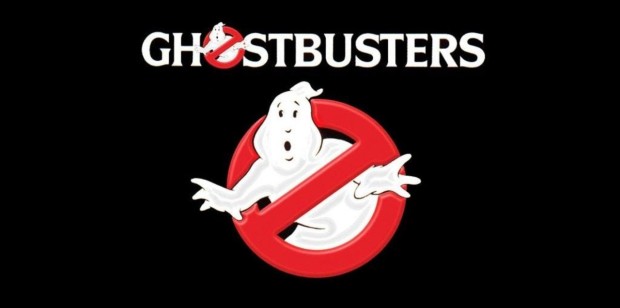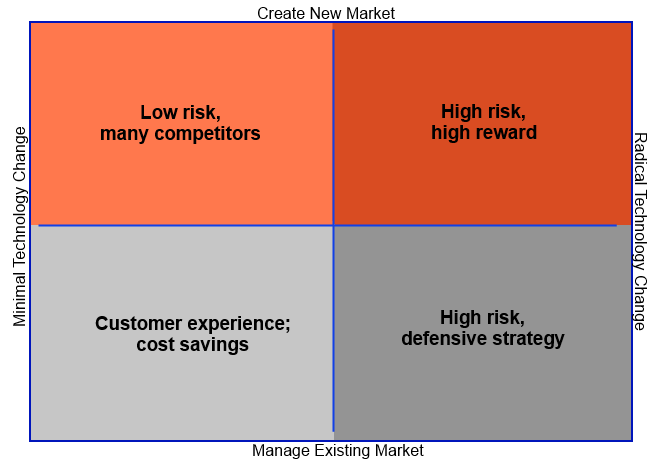
Life is Scary! Boo!
In keeping with the Halloween theme, this week I’ll riff on how corporate change can be spooky. Just like Halloween, the ghosts are (mostly) not real and underneath that scary costume is an open-minded, adventurous child looking to get rewarded for taking the risk of knocking on your door.
Change is a risky situation and certainly can be scary. But so is life. Every decision you make has a chance to fail. But you keep making decisions and moving forward. Why are you comfortable making these decisions and taking those chances?
- You feel confident that you have enough information to justify the decision.
- You feel that the odds for success are greater than the odds for failure.
- You recognize that while the odds may be in your favor, they still aren’t 100% and while there still is a chance for failure, you feel that impact of that failure is manageable.
- You know that if you fail, you can learn from that failure and move on to the next phase in your life. How do you know that? Well, your past is proof! You are where you are at this moment in life precisely because you’ve been able to do that. The proof is in the pudding, even if there are strange eyeballs floating in it.
Business is a Poker Game
Business decisions are no different than decisions you make in your personal life. No business or personal decision is guaranteed to succeed. It’s all about managing risk.
I like to compare business decision makers to successful poker players. Okay, poker isn’t exactly in line with the Halloween theme but it’s such a great analogy that I can’t resist! The cards you receive are based purely on chance. You might get lucky with strong hands, but you also may find yourself getting a bunch of rags in a row. Successful poker players have learned the skill of identifying and gathering information at hand and making on-the-spot assessments on whether they are likely ahead or not and acting on it. They are comfortable with making decisions on imperfect and very recently acquired information because they know that over time they will come out ahead, overcoming those few situations where they either were incorrect in their assessments or the unfavorable odds of the competition somehow came through, which happens on occasion.
Unlike true gamblers, I’d rather be on the side with good information.
Change Has Always Been Scary
Getting back to being scary, while certainly those who are willing to undergo change in a corporate environment have to overcome fear of making that change, the real challenge is to overcome those who are so scared of change that they put up all sorts of resistance! Niccolo Machiavelli captured this dynamic very well over 500 years ago!
“There is nothing more difficult to take in hand, more perilous to conduct, or more uncertain in its success, than to take the lead in the introduction of a new order of things. For the reformer has enemies in all those who profit by the old order, and only lukewarm defenders in all those who would profit by the new order, this lukewarmness arising partly from fear of their adversaries … and partly from the incredulity of mankind, who do not truly believe in anything new until they have had actual experience of it.”
The fear is on both sides: Those who want to take on the risks of change are afraid of the potential consequences of the resistance or poor adoption, and those of the resistance are afraid (threatened) by change and want to protect the status quo. Which side are you on?
If you are on the side of wanting to change, what are you afraid of? Perhaps you are afraid you are incorrect in your assessments to justify the change and that might damage your reputation or livelihood? Are you afraid that the resistance may be stronger than you and you will be unable to initiate change even though your assessment is correct? Are you afraid that the complexity of making the change may require more time to effect the change than there is opportunity to reap the benefits of that change? Are you afraid that even though you are correct you may be ahead of your target audience and adoption might not happen?
All are good reasons to be scared. The difference between 500 years ago and now is that risks of not changing are much greater now due to the rapid and continually accelerating rate of change. But how do you overcome that fear in a corporate environment? You need to go back to the 4 reasons I stated above on how you manage to do this on your own in your daily life and find a way to implement this on a larger scale within your corporate environment. The reasons are the same but the means will be different because of the increased complexity of the entity and environment.
Let’s Take the Mask Off
Let’s look at each and see how this could be played out on a larger scale.
- You feel confident that you have enough information to justify the decision.
These days you will need to act on more imperfect information than in the past as the windows of opportunity are getting shorter. What that means is that you will need to find a way to gather information in a quick fashion that has a higher probability of being correct than incorrect. Where you draw the line on your odds of being correct (51%, 60%, 70% ?) defines your tolerance for risk. However, we are well past the days where you can demand a confidence approaching 100% before making a decision, so everyone needs to get comfortable with less information.
However, advances in technology have produced good analytical tools and processes that can help you do this by predicting consumer behavior with greater accuracy than in the past very quickly from piles of data. Coupling that with sound but efficient due diligence practices can allow companies to make decisions quicker to take advantage of decreasing windows of opportunity. You just need to get over your fear and trust the data as traditional methods to get greater accuracy will put you outside the window of opportunity. So the time required to invest in more accuracy isn’t worth it and will eventually be recorded as a loss in any case. - You feel that the odds for success are greater than the odds for failure.
How do you achieve this? In addition to good data that suggests you have a very strong hand, there is no substitute for experience! If the change required has similar characteristics of past successes, then there is no reason to believe that this new endeavor will have any less chance unless the environment has dramatically changed. This, in fact, can help you make a decision to move forward before you’ve gathered every bit of information. If the data is suggesting that the endeavor has merit and you have seen similar situations succeed, then you can move forward based on that knowledge. Just as in poker, if you feel your competition is weak and you’ve successfully bluffed him out of a hand with weaker holdings in the past, then there is a good chance a bluff will work again. Go with it! He may call your bluff but there are no guarantees! - You feel that impact of that failure is manageable.
You just need to ensure that your company isn’t betting all its eggs in a single basket. Or to go back to the poker analogy – you aren’t betting all-in on every hand! Diversity is just as important in innovation and change as it is in sustainability. In fact, that is what builds resiliency into your business model. Your innovation portfolio needs to be as diverse as your operational model or your investment portfolio. That way you can build in compensating options as well as hedges into your strategy for change. You need to invest in strategies across both the risk and reward spectrum. The below chart is a good guide to deciding on an innovation portfolio. How you distribute your investment will depend on your tolerance for risk vs. reward. - You know that if you fail, you can learn from that failure and move on to the next phase.
There are 2 key approaches here. One is cultural and the other is process. From a cultural perspective, your company needs to develop a learning culture that embraces change and does not punish all failures. Certainly, if someone repeatedly fails, that may demonstrate a pattern rooted in incompetence or poor execution. However, a culture that encourages risk and accepts that failure is just part of the process is a culture that will be able to learn and move on. A learning organization has the capacity to absorb failure, learn from it and apply it successfully to the next endeavor. It may be difficult to change an established culture, but it can be done if there is acceptance with executive leadership and the company invests in tools and resources that support rapid learning processes.
Which brings us to process. The right tools, such as internal crowdsourcing and cross-functional communication tools, coupled with modern processes that enable rapid change can help a company build in confidence they can execute change quickly and successfully. One of the biggest reasons for failure is the inability to execute the change within the window of opportunity. This capability supports reason number 2 above as well. Your confidence in your capability to execute change within the window of opportunity will go a long way to increase the odds of success!
Bringing in the Ghostbusters!
Ultimately, a company’s ability to overcome fear of change boils down to 2 key capabilities:
- The ability to gather information quickly and accurately to a point where the confidence to act on that information has a higher chance of success than not
- The ability to execute the change overcoming internal and external resistance, culture and organizational complexity fast enough to reap the rewards within the window of opportunity.
These two capabilities combine into a single capability called Transformational Efficiency. Essentially this is the capability of a company to continually transform its model in response to rapidly changing demand effectively (i.e. within the window of opportunity) and efficiently (i.e. the costs of the change is less than the eventual reward). It takes time and effort to build this capability with the right people, tools and processes. But once a company has optimized this capability, it will allow them to never have to fear change again! Just as the Ghostbusters helped their clients by capturing ghosts and giving them peace of mind, so can RE:INVENTION help your company develop Transformational Efficiency to give you confidence you can overcome the fear of change. Contact us. Don’t be afraid!
Happy Halloween!


No Comments to “How to Make Corporate Change Less Spooky”